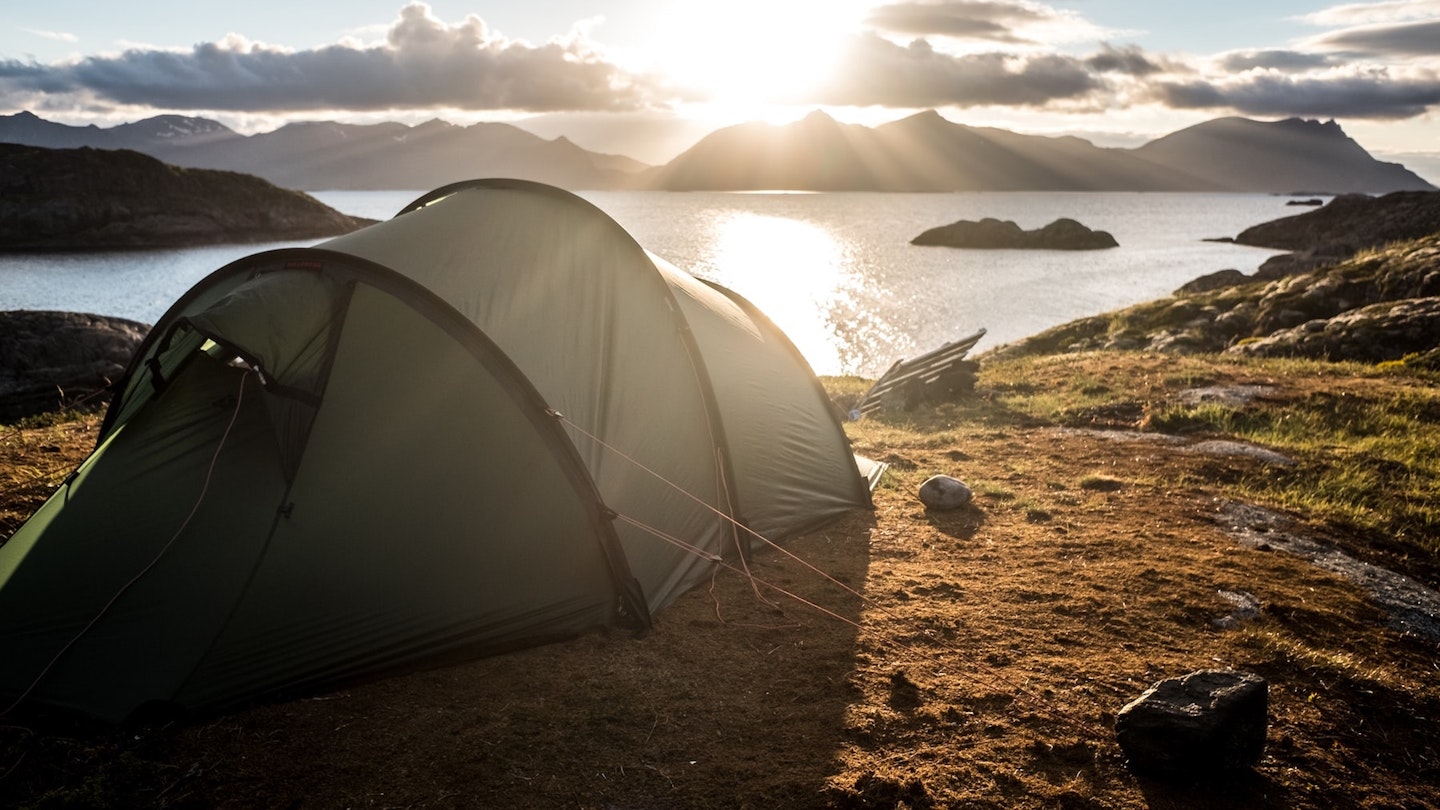Whether you’re hitting the hiking trails of the UK or heading further afield, one of the best tents is a must. It’s your home for the duration of your trip, protecting you from the elements, get some rest and allowing you to spend more time in some of the most amazing places on earth. Here, we show you how to pick the best backpacking tent.
Tents are also the ideal way of saving money when you’re travelling - after the initial purchase, you’ve got your accommodation sorted wherever you may be, and at no extra cost (other than maybe a very small pitch fee).
When you’re choosing your backpacking equipment, it’s all about getting the right gear. Because you’re going to be carrying it all around on your back for weeks at a time, the gear needs to be lightweight, robust and highly functional. This is as true for your tent as it is for your hiking boots and waterproof jacket.
To help you find the tent that’s right for your next adventure, we’ve rounded up the best backpacking tents below. Read on to see our roundup and to read our buyer’s guide.
The best backpacking tent shortlist:
• Wild Country Zephyros Compact
• Sierra Designs Meteor Lite 2
• Big Agnes Copper Spur HV UL
• Vango F10 Project Hydrogen
• Berghaus Grampian 2
• Alpkit Ordos 2
What to look for when choosing a backpacking tent
The right backpacking tent for you will depend on the type of backpacking you have planned. So, while we can’t say that there is one definitive one-size-fits-all “best” option, there are a few features that we recommend looking out for:
How many people are going backpacking? If you’re going as a two, does it make more sense to your plans for you to share a two-person tent and share the carrying, or pick up one solo-sleeper each? If you’re backpacking, we don’t recommend anything larger than a two-person tent - if there are three or more of you, multiple tents are a must.
How are you travelling? If you’re doing a lot of travelling in a car, then you can afford to have a larger, heavier tent. If you’re going solo and on foot, then light and small is best. Similarly, if you’re setting up a base camp to operate from, a larger tent won’t be an issue as it’ll be pitched more than carried. Alternatively, if you’re sleeping somewhere new night after night, something light and easy to pitch takes priority.
What’s the weather going to be like? A hydrostatic head (HH) of at least 2000mm is needed to fend off wind and rain, with 3000mm helping keep dry in the snow. But it’s not just bad weather to look out for - camping in summer can be extremely uncomfortable and potentially dangerous without amble ventilation. If you’re heading away in the hottest months, consider a tent with a rollable flysheet.
The best backpacking tents in 2021:
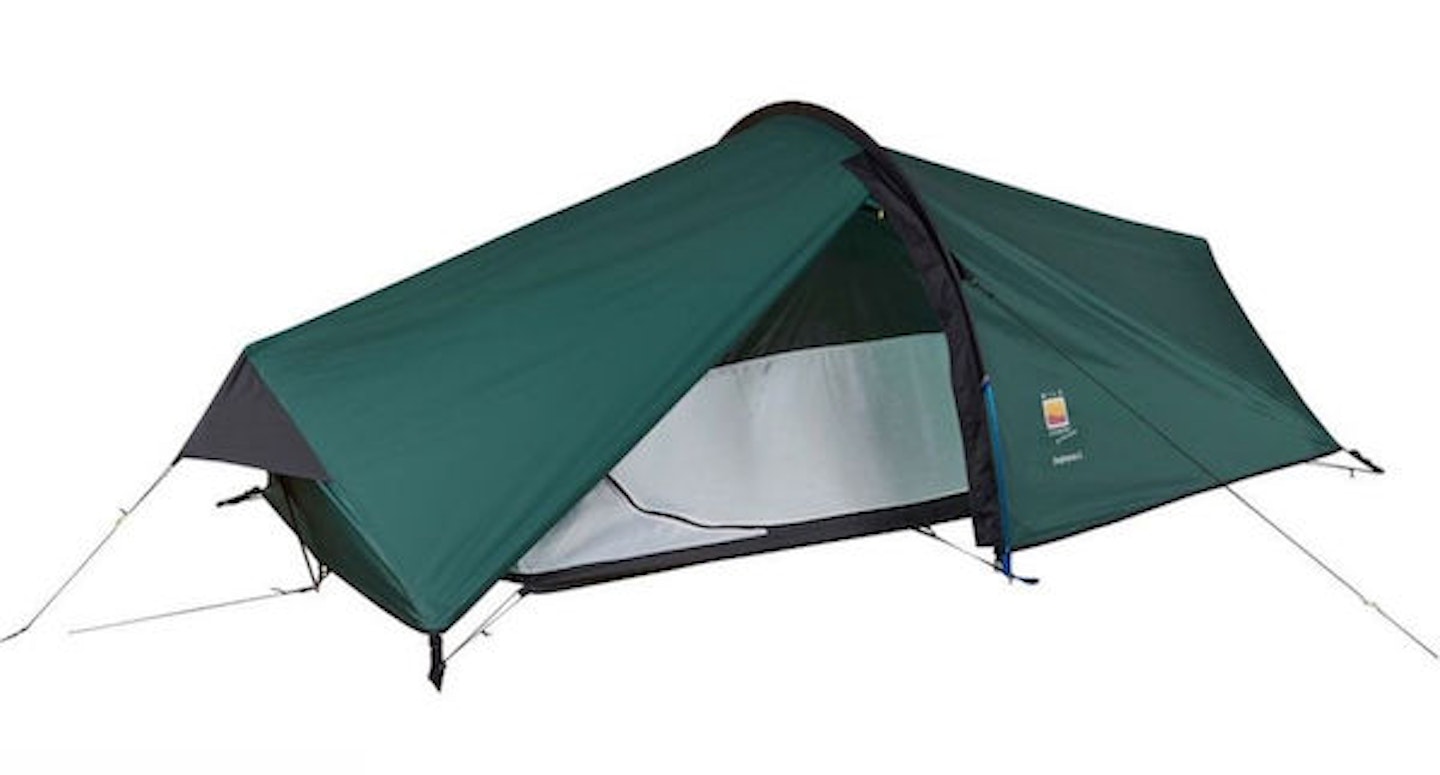
www.cotswoldoutdoor.com
Best for backpacking
The Wild Country Zephyros Compact is an excellent little tent for hiking and backpacking, with Compact 1 sleeping one person and Compact 2 sleeping two. What’s The Best’s Chris Williams was luckily enough to review the Compact, taking it to the Lake District and Scottish Highlands for a robust test. Chris praised the tent’s construction quality and lightness (the Compact 2 weighs under 2kg), as well as its easy pitching. The waterproofing is considerable, and its well-placed meshing keeps the air flowing. Read the full review here.
Pros: True 3-season tent, light and compact, basic but well made, good value, easy pitching
Cons: Small porch space, not freestanding
| Specifications | |
|---|---|
| Sleeps: | Compact 1: One / Compact 2: Two |
| Weight: | Compact 1: 1.57kg / Compact 2: 1.95kg |
| Dimensions: | Compact 1: 220cm (L) x 114cm (W) x 92cm / Compact 2: 230cm (L) x 130cm (W) x 92cm (H) |
| Packed size: | Compact 1: 30cm x 18cm / Compact 2: 30cm x 19cm |
| Flysheet: | Stormtex P4000 |
| Groundsheet: | Aquastop P5000 |
| Poles: | 8.5mm main pole, 8mm end poles - Superflex alloy |
| Design: | Tunnel |
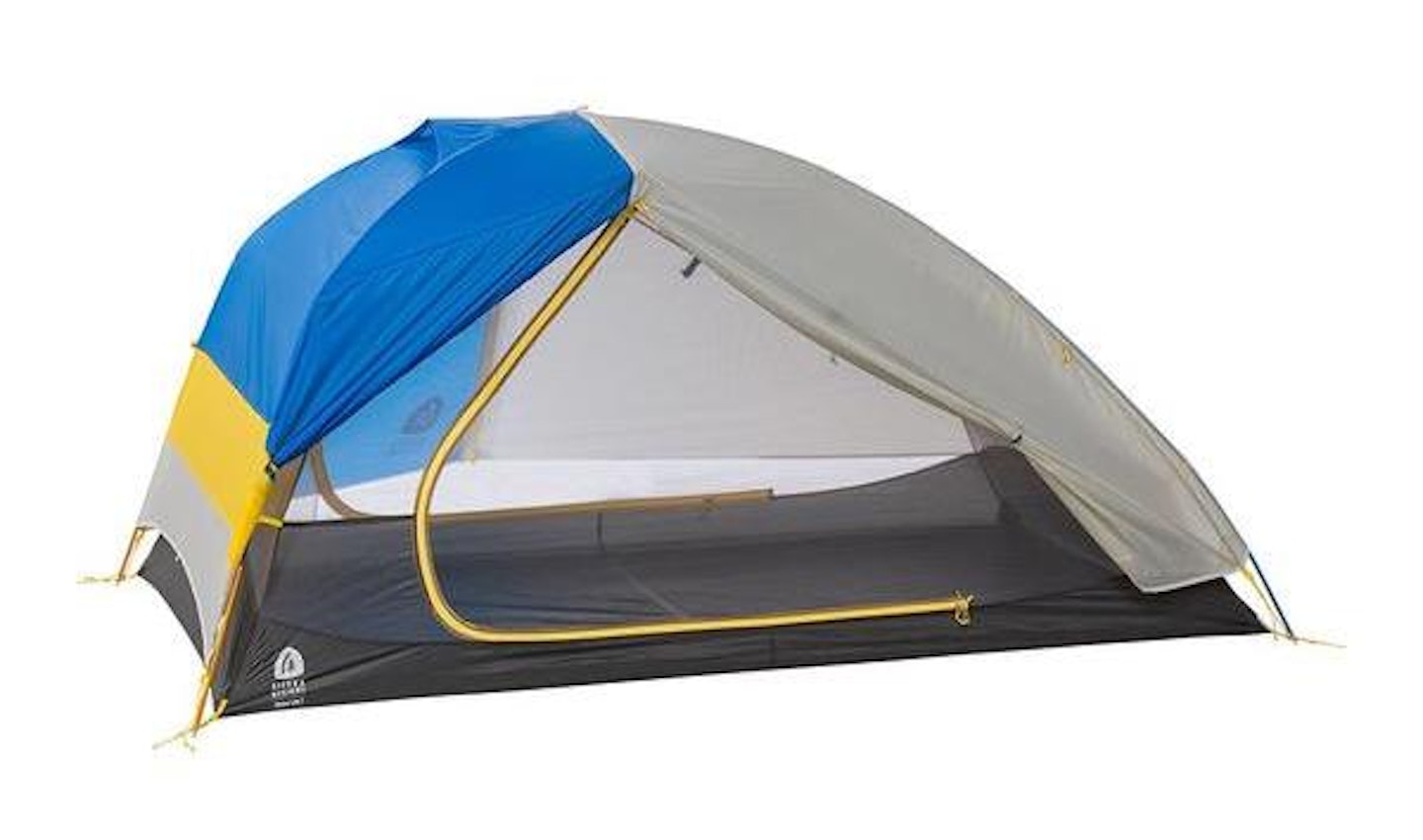
wildbounds.com
Best freestanding
If it’s a freestanding tent you’re looking for, then the Sierra Designs Meteor Lite 2 is the classic choice. The tent carries a full-mesh inner tent that offers excellent ventilation, especially when combined with the rollable flysheet. Smartly, Sierra Designs has incorporated a pre-bent pole design which allows for a nice amount of headroom. It really is that simple but in this simplicity, you’ll find the excellence and precision required by the dedicated backpacker.
Pros: Ultralightweight, freestanding, nice headroom, great ventilation, quick setup
Cons: A bit pricey
| Specifications | |||||||||||||||||||
|---|---|---|---|---|---|---|---|---|---|---|---|---|---|---|---|---|---|---|---|
| Sleeps: |
| ||||||||||||||||||
| Weight: | 1.63kg | ||||||||||||||||||
| Dimensions: | 213cm (L) x 130cm (W) x 104cm (H) | ||||||||||||||||||
| Packed size: | 44cm x 15cm | ||||||||||||||||||
| Flysheet: | 20D Nylon Ripstop | ||||||||||||||||||
| Groundsheet: | 30D Nylon Ripstop | ||||||||||||||||||
| Poles: | DAC Featherlight NSL Aluminum | ||||||||||||||||||
| Design: | Freestanding |
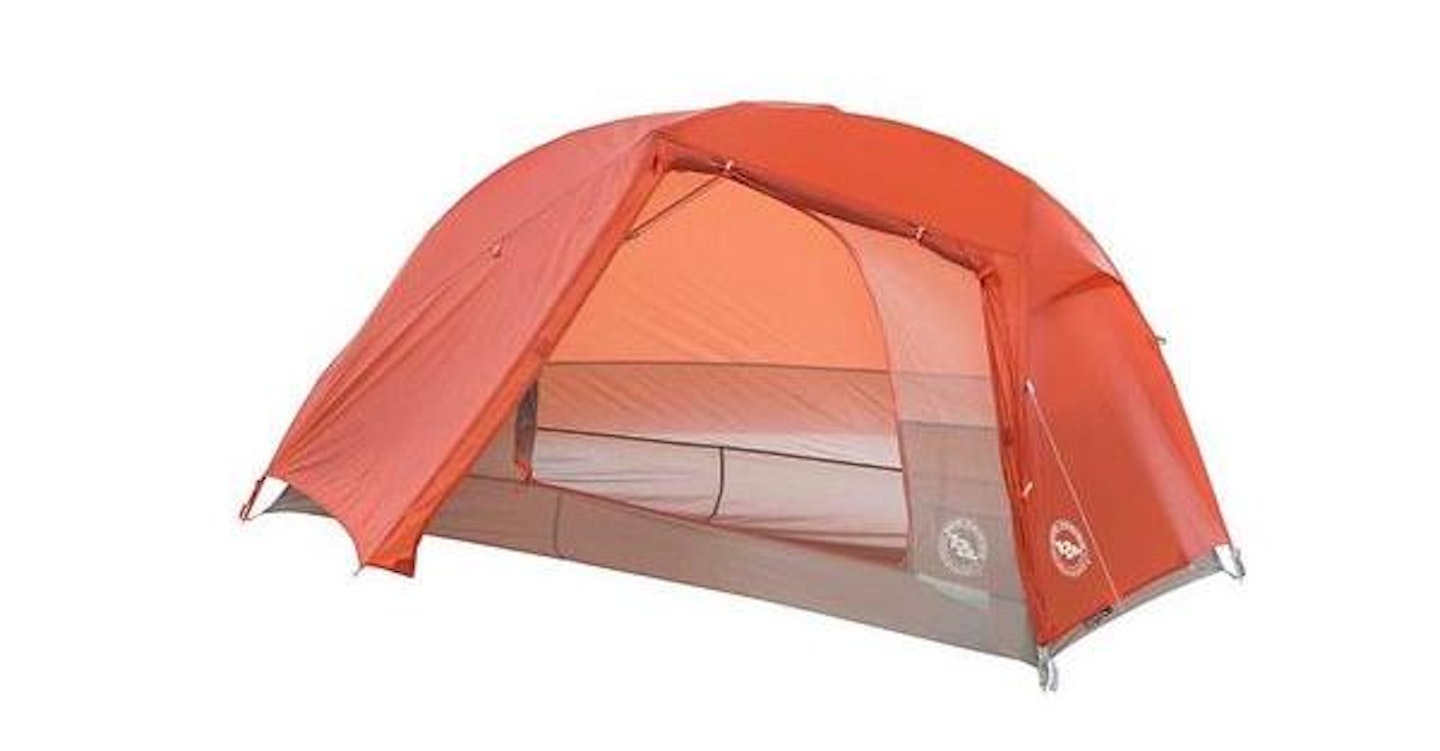
wildbounds.com
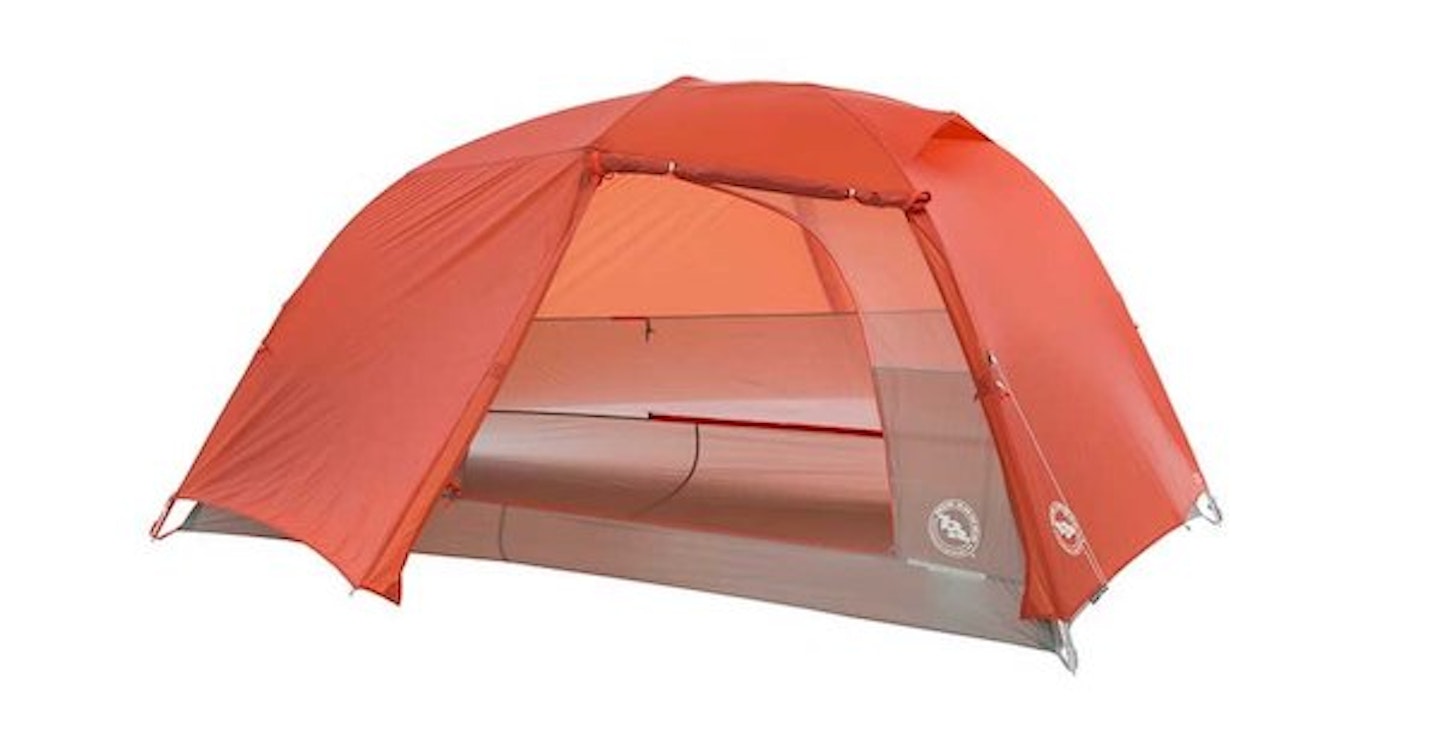
wildbounds.com
Best for space (as in it's roomy, not that it's for astronauts)
The Big Agnes Copper Spur range has managed to combine a spacious design with ultralightweight and freestanding convenience. The UL1 sleeps one, and the UL2 sleeps two. With plenty of head height, gear loops, gear loft and amble pockets, once you're settled inside the Copper Spur, it feels positively roomy. Access is provided via one awning door on the UL1, and two on the UL2 (which can be combined with hiking poles to create a gullwing canopy). It’s easy to set up and weatherproof. If you can stomach the cost, this might be the ultimate backpacking tent.
Pros: Roomy, plenty of pockets, easy to pitch and super lightweight
Cons: Pricey, not the most robust materials
| Specifications | |
|---|---|
| Sleeps: | UL1: One / UL2: Two |
| Weight: | UL1: 1.08kg / UL2: 1.42kg |
| Dimensions: | UL1: 224cm (L) x 142cm (W) x 97cm (H) / UL2: 224cm (L) x 249cm (W) x 102cm (H) |
| Packed size: | UL1: 44cm x 14cm / UL2: 50cm x 15cm |
| Flysheet: | 1200mm HH |
| Groundsheet: | 1200mm HH |
| Poles: | DAC Featherlite NFL and NSL pole system |
| Design: | High volume |
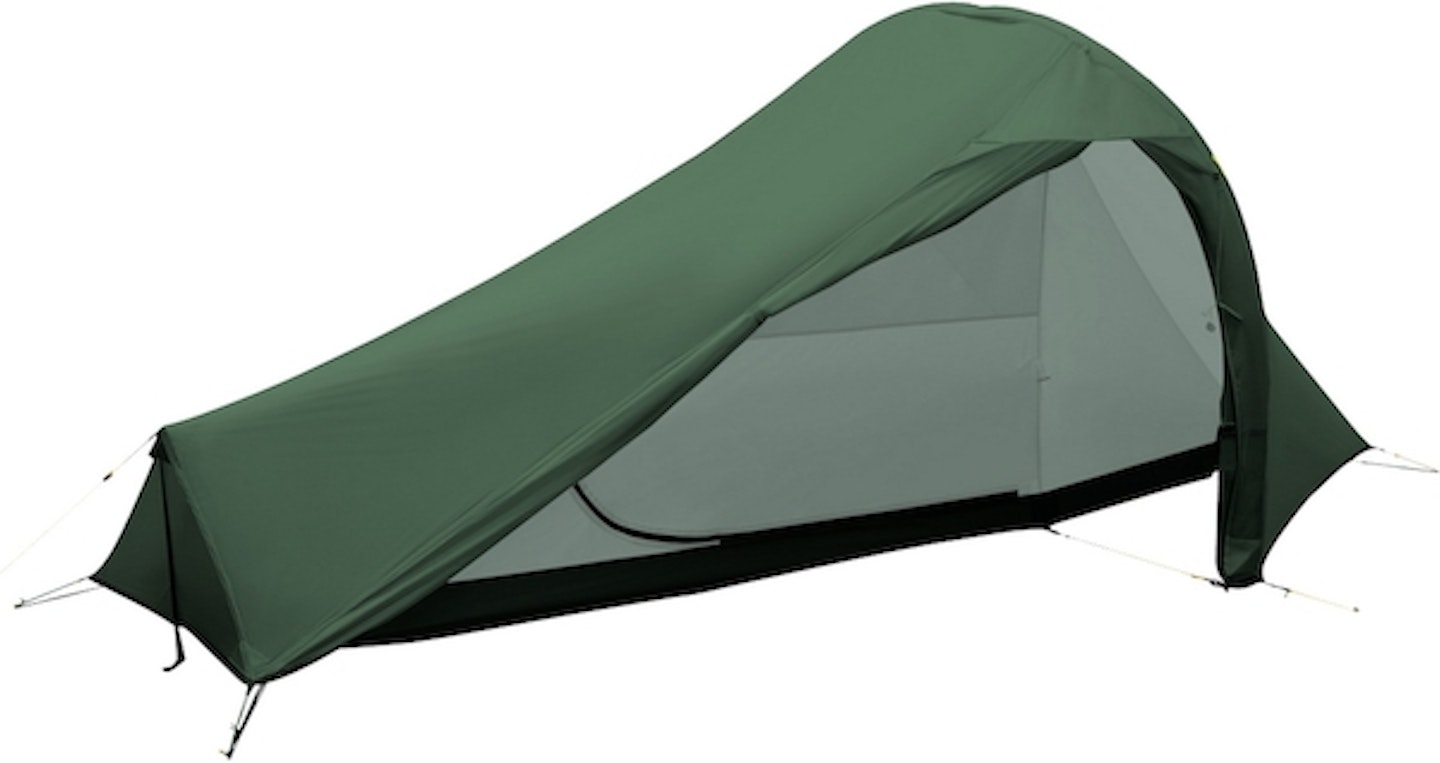
www.cotswoldoutdoor.com
Best for hardcore backpackers and bike-packers
The Vango F10 Project Hydrogen is a hefty investment, but in exchange for an empty bank account, you’re getting a stellar backpacking tent. As you well know, most of a tent’s weight and bulk comes from the poles. Rather than trying to find a new alloy, Vango has circumvented the issue entirely, instead opting for inflatable ribbing called Ultralight AirBeam. This beam can be filled with a small bike pump, and hold the structure stably, even in high winds. One upright carbon pole (which can fold down to peg-size), a few pegs and minimal guideline later, and you’re pitched. It’s a two-layer tent, with the flysheet, inner and groundsheet all being connected for ease and speed. It’s even got a porch.
Pros: Extremely light, innovative, strong materials, quick to pitch, twin-layered, perfect for backpacking and bike-packing
Cons: Very expensive
| Specifications | |
|---|---|
| Sleeps: | One |
| Weight: | 700g |
| Dimensions: | 240cm (L) x 145cm (W) x 100cm (H) |
| Packed size: | 1L equivalent |
| Flysheet: | Protex® 7D Double Silicone Fabric - 2000mm HH |
| Groundsheet: | 10D Ripstop Nylon PU Groundsheet |
| Poles: | Carbon Upright |
| Design: | Inflatable |
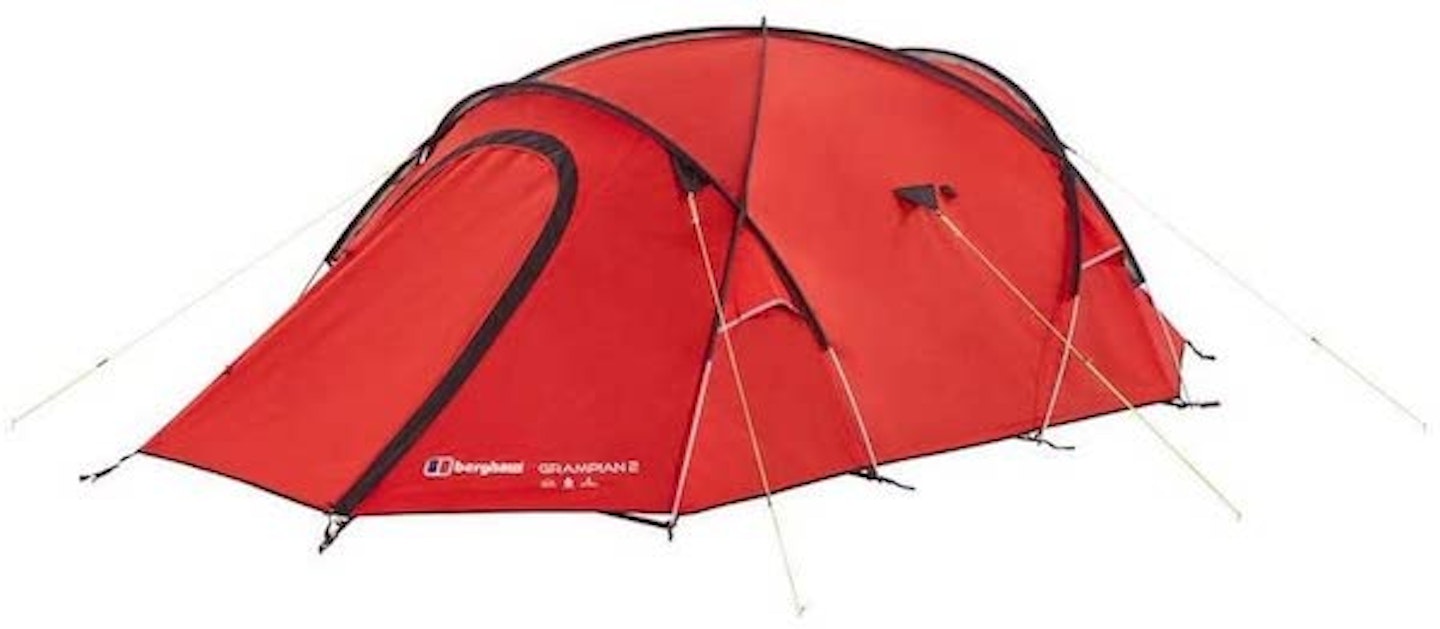
www.blacks.co.uk
Best for high winds
The Berghaus Grampian 2 is a robust and comfortable tent, capable of standing up to some pretty unpleasant weather. Its material, shape and pole construction makes it a haven in high winds, rainfall and snow. What’s The Best’s William Lobley has used this tent for some years and finds it to be a spacious and well-protected place to kip, whether on a backpacking trip or regular camping holiday. It’s quite a heavy tent, weighing in at 4.24kg and proving a tad bulky when packed. If you’re moving on day-by-day, this might not work for you. However, if you’re taking things easy and setting up a base camp for a couple of days at a time, then the additional room and comfort is a welcome addition. This tent is a great choice for anyone tackling the NC500 and wild camping.
Pros: Spacious sleeping area, not freestanding, a good defence against weather, two entrances (one for you, one for your backpacks and equipment), affordable
Cons: Heavy and bulky
| Specifications | |
|---|---|
| Sleeps: | Two |
| Weight: | 4.24kg |
| Dimensions: | 370cm (L) x 160cm (W) x 110cm (H) |
| Packed size: | 49cm x 18cm |
| Flysheet: | 3000mm HH |
| Groundsheet: | 5000mm HH |
| Poles: | 4 8.5mm lightweight 7001-T6 alloy poles |
| Design: | Geodesic |
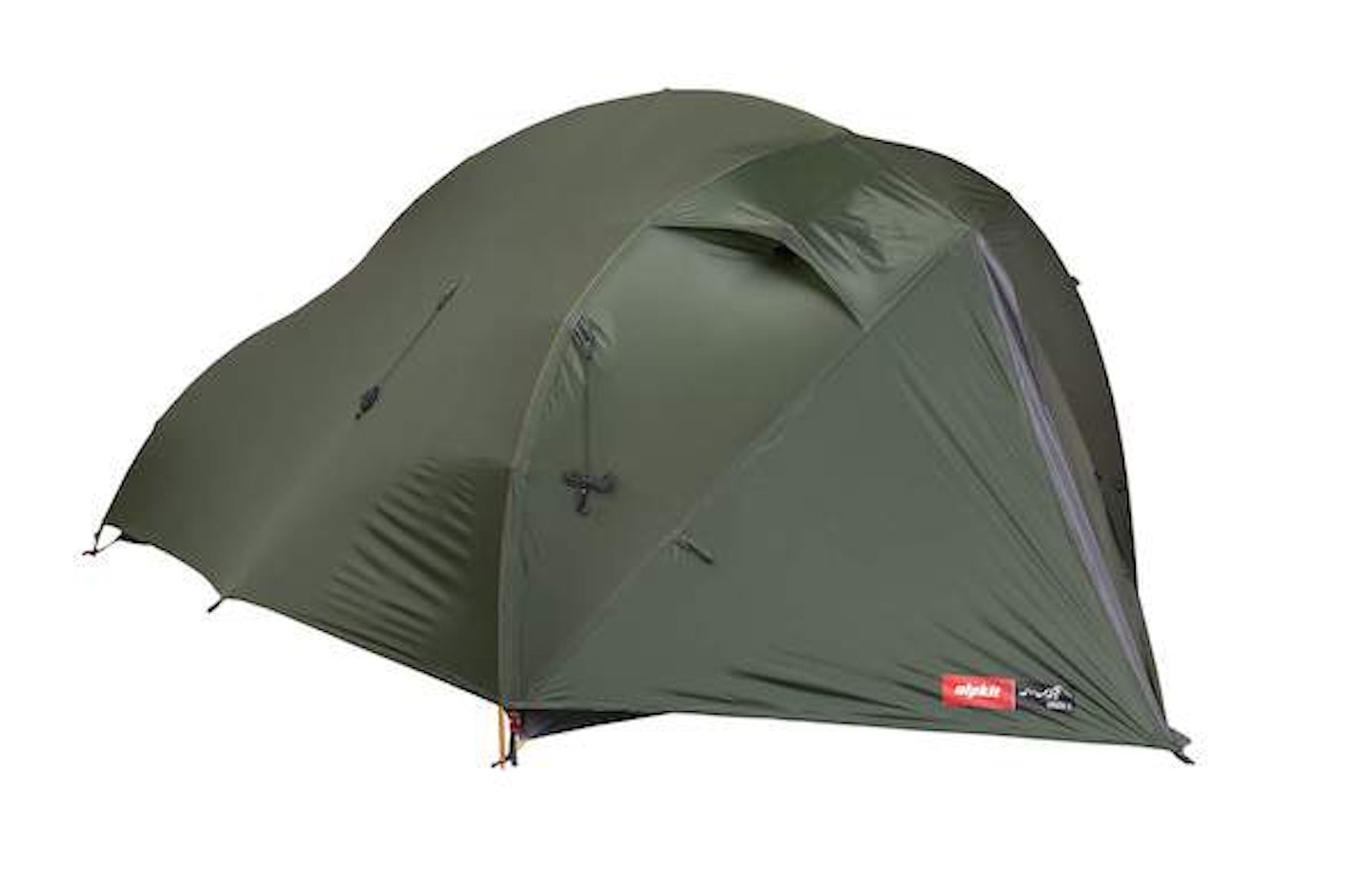
alpkit.com
Recommended
The Alpkit Ordos 2 is an ultralightweight backpacking tent that is well placed to offer regular backpackers a portable sanctuary without breaking the bank. It’s a spacious place for two sleepers, with a surprising amount of headroom. Its semi-geodesic design has one entrance and one vestibule, with some space for storage in the modest porch. Its weatherproofing is strong enough for you to sleep through some manky weather without worry. Note that when you see the weight of this tent advertised at 1.4kg, that’s without the pegs and footprint (which is sold separately for £29.99, but we’d recommend it to protect the groundsheet from snags and damage).
Pros: Lightweight and highly portable, roomy, easy to set up, reliable
Cons: Modest porch and footprint is a separate purchase
| Specifications | |
|---|---|
| Sleeps: | Two |
| Weight: | 1.7kg |
| Dimensions: | 284cm (L) x 136cm (W) x 102cm (H) |
| Packed size: | 42cm x 13cm |
| Flysheet: | 100% Nylon ripstop 15D x 15D/186T x 154T PU |
| Groundsheet: | 20D Nylon R/S 3000 mm PU/Sil |
| Poles: | 7001-T6 / upgradeable to DAC NSL Green |
| Design: | Semi-geodesic |
Looking for a backpack for that tent? Read our roundups here: Best 65L rucksacks | Best 30-40L backpacks | Best 30-35L backpacks
Buyer’s Guide
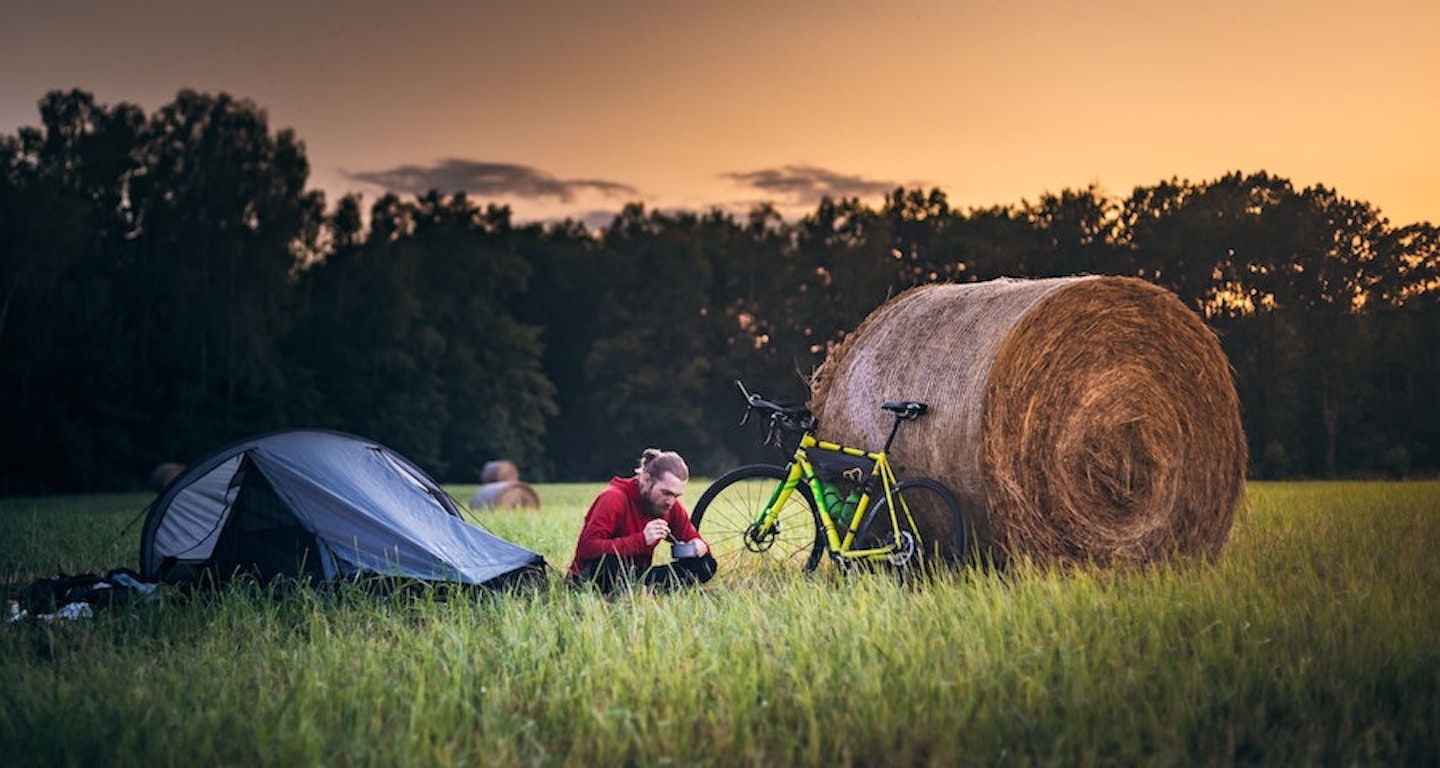
So, what’s the best backpacking tent?
If you’re going to be doing the Scottish NC500, you’ll likely have a vehicle as to the main base. This allows you to take a slightly bigger tent, such as the Berghaus Grampian 2, which has the benefit of luggage storage space and reliable weatherproofing.
However, if you’re heading off to partake in a backpacking trip on foot, then small, lightweight and quick-pitching tents are best for you. A tent such as the Wild Country Zephyros Compact or Sierra Designs Meteor Lite are ideal, courtesy of the lightweight and no-fuss designs.
Bike-packing is an increasingly popular alternative to traditional hiking and backpacking. Such an adventure requires even smarter packing and use of space. In this situation, the Vango F10 Project Hydron cannot be beaten. Its ultralightweight design takes advantage of innovative inflatable ribbing to deliver an award-winning tent that weighs only 700g - perfect for packing on a pannier.
What is a freestanding tent?
Freestanding tents are tents that can hold themselves up and holp shape without needing to be pegged out. This type of tent is generally enjoyed because it's easy to set up. They are also helpful if you decide against your original pitch - the tent can just be picked up and moved without needing to start all over again.
Note: You’ll still want to peg your freestanding tent down to protect from high winds and maximise waterproofing.
What is HH?
HH is the acronym of hydrostatic head, a measurement that is used to determine the waterproofing of a material. The test involves sitting a column of water atop the material, with more water being added until the material begins to leak. This test simulates the pressure of rainfall. HH is measured in millimetres (mm): the higher the number, the more waterproof the material is.
2000mm HH is a good rating, meaning the material can handle heavy rainfall that is being driven by wind.
What is a flysheet?
A flysheet is the outer material layer of a tent. It’s the flysheet that provides the weatherproofing.
What is an inner?
The inner, sometimes called inner-tent, is a compartment inside a tent. In one or two sleeping tents, the inner is often made of mesh and has a built-in groundsheet. In addition to providing ventilation and protection from insects, the inner keeps you and your belongings separate from the flysheet, as touching the outer layer compromises waterproofing.
Some inners need erecting separately from the flysheet, while others are already connected.
What is a groundsheet?
A groundsheet is a thick and tough waterproof material that acts as the tent’s flooring. The material should have a high HH rating (3000mm+) to ensure that damp from the ground does not penetrate the tent.
What is a geodesic tent?
A geodesic tent is a tent that uses external poles which cross each other. This structure distributes tension evenly, is very stable and is well-regarded for its ability to withstand stormy weather.
A semi-geodesic tent follows the same principle, albeit with fewer poles and slightly weaker stormy weather performance.
